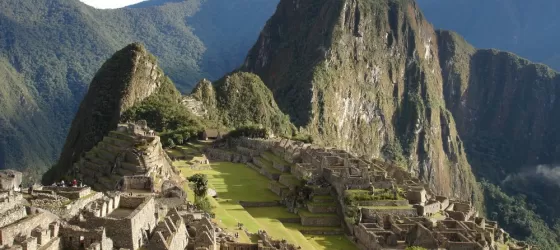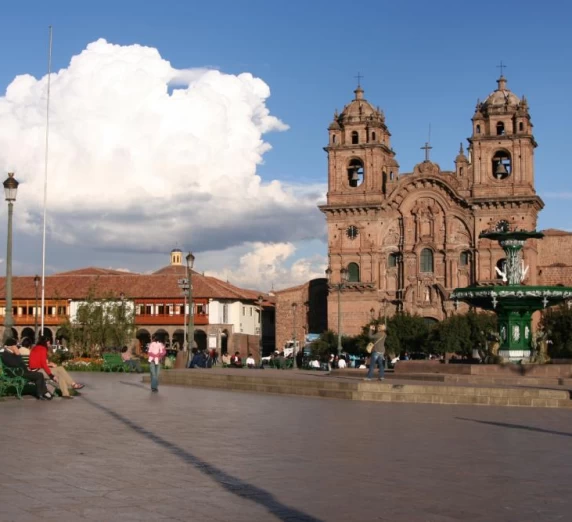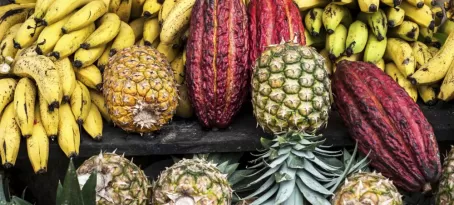Pre-Travel FAQs
Do I need a visa to travel to Peru?
Generally, no. Citizens of the United States, Canada, United Kingdom, Switzerland, South Africa, New Zealand, Netherlands, Ireland, Germany, Belgium, and Australia do not require a Peru Tourist Visa. If your country is not listed, check with the Peruvian Embassy in your home country for specific travel requirements.
Do I need travel insurance before heading to Peru?
Yes, it’s highly recommended. Travel insurance can cover unexpected events such as medical emergencies, trip cancellations, and lost luggage. We partner with TravelGuard Insurance to offer comprehensive packages at competitive prices. Check our "Once You’re Booked" page for more information.
When is the best time to visit Peru?
Peru has varied climates, so the best time depends on your destination. The dry season from May to September is ideal for visiting Cusco, Machu Picchu, and the Andes. If you're traveling to the Amazon, the wet season (December to March) may offer unique wildlife viewing opportunities, though there will be more rain.
What type of weather should I expect in Peru?
Peru has three distinct regions: the coast, the Andes, and the Amazon. The weather varies by region and altitude. The coastal areas, including Lima, are warm and dry, while the Andes, including Cusco and Machu Picchu, have cooler temperatures, especially at night. The Amazon is hot and humid year-round. Be sure to check the weather for your specific destinations before packing.
What language is spoken in Peru?
The official language of Peru is Spanish, but Quechua and Aymara are also spoken, particularly in the Andean and rural regions. English is commonly understood in tourist areas, but learning a few basic Spanish phrases can be helpful.
Do I need any specific permits to visit places like Machu Picchu?
Yes, you will need a ticket to enter Machu Picchu, and these tickets are limited per day, so it’s best to book well in advance, especially during peak season (May to September). If you plan to hike the Inca Trail, you must also obtain a special permit, which can sell out months ahead.
What is the local currency in Peru, and can I use U.S. dollars?
The local currency is the Peruvian Sol (PEN). U.S. dollars are accepted in some places, especially in tourist-heavy areas, but it's always best to have Soles on hand for smaller transactions and rural areas.
How do I get around in Peru?
In cities, taxis and rideshare apps like Uber are available, but make sure to use registered taxis for safety. For longer distances, Peru has a reliable bus system, and domestic flights are commonly used to travel between major cities like Lima, Cusco, and Iquitos. For remote areas like the Amazon or Andes, organized tours are recommended.
Health & Safety
Is Peru safe for travelers?
Peru is generally safe for travelers, but common sense precautions are recommended. In cities, be cautious with valuables and avoid walking alone at night in unfamiliar areas. In rural and touristic areas, safety risks are lower, but it’s always best to stay aware of your surroundings.
Are vaccinations or health certificates required for Peru?
While there are no mandatory vaccinations to enter Peru, if you're traveling to the Amazon or rural areas, a yellow fever vaccination may be recommended. It’s also a good idea to be up-to-date on routine vaccinations like hepatitis A and B and typhoid. Check with your doctor for specific recommendations based on your health and travel plans.
Is altitude sickness a concern, and how can I prevent it?
Altitude sickness can be an issue in high-altitude areas like Cusco, the Sacred Valley, and Machu Picchu. To prevent it, stay hydrated, avoid heavy meals and alcohol, and consider arriving a few days early to acclimatize. Many hotels offer coca tea, a traditional remedy for altitude sickness. Consult your doctor if you are concerned about altitude and consider medication like acetazolamide (Diamox).
What should I do in case of a medical emergency?
We recommend purchasing travel insurance to cover any medical emergencies. Major cities have hospitals and clinics, while rural areas may have limited medical services. Carry a small first-aid kit for minor issues, especially if trekking or visiting remote regions.
During Your Stay
Can I use my cell phone while in Peru?
Yes, but you must have a GSM phone that uses the 850 or 1900 MHz bands. Ensure your phone is unlocked to use a local SIM card from carriers like Claro, Entel, or Movistar. Check with your provider for international roaming rates as they can be expensive.
What is the internet access like in Peru?
High-speed internet is available in most hotels and cafés in cities like Lima, Cusco, and Arequipa. In rural areas or the Amazon, connectivity can be limited or nonexistent. If internet access is a priority, confirm availability with your accommodations ahead of time.
Do I need power adapters?
Yes, Peru uses 220-volt electricity, so if your device is 110 volts, you’ll need a converter. Most outlets are two-pronged flat type (like in the U.S.), but some use round prongs, so a universal adapter is recommended. For three-pronged devices, bring a two-to-three prong converter.
How will I pay in Peru? Do I need to exchange money?
Credit cards are widely accepted in major cities like Lima and Cusco, but in rural areas and smaller towns, cash is essential. ATMs are available in cities, but it’s a good idea to exchange some money before leaving urban areas. Peruvian Soles (PEN) are the local currency, though USD is accepted in some places.
Is tipping customary in Peru?
Tipping is not mandatory but appreciated. For guides, budget $2–$10 per day, and for drivers, $1–$3 per day. In restaurants, tipping around 10% is standard if service is not included.
Can I drink the water in Peru?
No, tap water is not safe to drink. Always use bottled or purified water for drinking and brushing your teeth. Tap water is safe for showering and washing hands, but we recommend using hand sanitizer and letting dishes dry fully before use.
What are the toilets like in Peru?
In major cities and hotels, toilets are typically flushable. However, in rural areas or during treks, you may encounter squat toilets. Always carry toilet paper and hand sanitizer as these may not be available in remote locations.
What should I pack for a trip to Peru?
Your packing list will depend on your destinations. For city visits, casual, comfortable clothes are fine. If you're trekking or visiting the Amazon, pack hiking gear, layers for varying weather, waterproof clothing, insect repellent, and sun protection. Don’t forget sturdy walking shoes.
What are the typical costs for basic items?
Costs may vary slightly, so ask your local guide for updated information. Use these as a general reference:
-
Short bus ride: $0.25
-
1 hour of Internet at a café: $0.75
-
Bottle of beer: $1.00
-
Street food/snack: $1.50
-
Lunch at a local diner: $5.00
-
Dinner at a decent restaurant: $8–$12
Cultural & Local Experience
Are there any cultural customs I should be aware of?
Yes, Peruvians are generally polite and appreciative of respect for their traditions. It's customary to greet people with a handshake or a kiss on the cheek in informal settings. When visiting religious sites or rural communities, dress modestly and always ask for permission before photographing locals.
What is the Inti Raymi Festival?
Inti Raymi, the Festival of the Sun, is Peru’s most important traditional celebration. Held annually on June 24 in Cusco, it honors the Incan Sun God with elaborate ceremonies, colorful costumes, and dances. The highlight takes place at the ancient site of Sacsayhuamán. The festival is a major cultural event and a must-see for visitors in June.
Are there any other important festivals I should know about?
Yes, Peru is rich in cultural celebrations. In addition to Inti Raymi, other significant festivals include:
-
Semana Santa (Holy Week) in March or April, celebrated with processions and festivities in Cusco and Ayacucho.
-
Feria de la Cruz in May, a colorful festival featuring Andean dances and processions throughout the country.
-
Qoyllur Rit'i in May/June, a pilgrimage blending Catholic and indigenous traditions in the mountains near Cusco.




















































